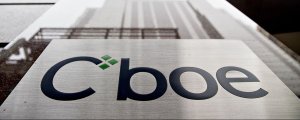This day in history: December 30, 2010: “Prime brokers were like banks. They made a spread on your capital by re-lending it to other people. If you stop them doing that, what happens?”
When Bear Stearns began to crumble in 2007, investors told their hedge fund managers to move their cash and securities somewhere else. Multiple prime brokerage, initially favoured to limit information leakage, suddenly became the most popular form of counterparty credit risk management.

Six years ago to this day marked the end of a very interesting year which set in place the framework at government level that would change the entire modus operandi of electronically traded financial markets.
2010 was the year in which, in the aftermath of the high profile failures of MF Global and PFG (Peregrine Financial Group), the US government embarked on a comprehensive set of proposals which were designed to completely redesign the entire infrastructure which operates institutional and retail OTC FX markets, namely the Dodd-Frank Wall Street Reform Act, which was signed in to US law by incumbent President Barack Obama in mid 2010.
At that time, commercial demises of large investment banks which had substantial interbank dealing and prime brokerage divisions in the United States, and collapses of British banks which have massive retail divisions but are majority-market share providers of Tier 1 FX dealing facilities peppered the headlines, with the British entities that adorn Canary Wharf having been bailed out by the tax payer.
In the US, bankruptcy was the preferred option, largely due to the traditionally un-American notion of asking hard working members of the public to prop up a failed institution and rewarding its leaders for dragging it under rather than making them face the music for having caused a gigantic firm to fail, bringing with it the ensuing financial crisis that did untold damage to the economy worldwide.
America ultimately got this right, although the short term effect was a massive requirement to restructure – Lehman Brothers and Bear Stearns both went to the wall in the latter part of the Millennial years, however the tax payer is now not burdened with owning major stakes in banks that continue to underperform, be undercapitalized and not meet their stipulated requirements whilst dominating the electronic trading market.
Prime brokerage in the immediate aftermath of the financial crisis was a very different landscape altogether.
Today, non-bank prime of primes dominate the entire electronic trading sector, with complex and highly ingenious systems that aggregate a combination of price feeds from Tier 1 banks as well as those from electronic communication networks (ECNs) such as Currenex, FXall and EBS, EBS being the electronic brokerage division of Michael Spencer’s interdealer broker ICAP, and FXall having been bought by Thomson Reuters in 2012 for $625 million with Phil Weisberg at the helm for several years until he quietly left the company in the third quarter of this year.
Retail brokerages back in 2010 often had a closed MetaTrader 4 system which involved a client terminal being connected to a dealing desk, and no liquidity feed at all. Prime brokerage was the preserve of hedge funds and institutional desks, not the retail trader.
How things have changed.
Today, with a feed from Sucden Financial, Saxo Bank, Advanced Markets, FXCMPro or GAIN Capital via a liquidity integration system from oneZero, Gold-i or PrimeXM, for example, the retail trading environment can emulate the institutional desks for just a few dollars per million.
Bearing this in mind, the level of understanding of the markets by the average retail FX trader is now up there with the institutional trader in terms of empowerment and market access, but back in 2010, things were somewhat different.
On December 30, 2010, the question of the effect of prime custody on prime brokerage was a major consideration.
When Bear Stearns began to crumble in 2007, investors told their hedge fund managers to move their cash and securities somewhere else. Multiple prime brokerage, initially favoured to limit information leakage, suddenly became the most popular form of counterparty credit risk management. With prime brokers unable from the summer of 2007 to fund themselves, let alone their hedge fund clients, the terms of the prime brokerage trade changed—though not necessarily in favour of the hedge fund, since prime brokers became more adept than
By the autumn of 2008 one thing was clear: assets were safer with a US broker-dealer than a UK bank. American prime brokers could fail, but as US broker-dealers their customers were not treated as general creditors. SEC Rule 15c3-3—the customer protection rule for broker-dealers— insisted fully paid-for and excess margin securities had to be segregated from assets pledged to or owned by the broker-dealer and any customer cash other than cash pledged as margin had to be locked up in special accounts accessible only by customers.
This was why most US broker-dealers were parking unencumbered customer assets in segregated accounts at in-house trust companies long before the crisis broke.
So when a broker-dealer failed, as Lehman Brothers did, all customer cash and other assets were given preference over general creditors of the firm. Assets held at US broker-dealers also benefited from the additional protection afforded by the Securities Investor Protection Corporation (SIPC).
In an SIPC liquidation, customer property was not caught up in a prolonged liquidation, but returned to customers. Any shortfall in the aggregate, which might easily occur in the case of securities pledged to the firm as collateral, was allocated pro rata among all customers, so a 10 per cent shortfall in the total value of customer assets resulted in a 10 per cent haircut for all customers.
In this case, the shortfall was covered by SIPC insurance of up to US$500,000 per customer, including up to US$100,000 of cash.
None of this applied in London, where Lehman Brothers International operated under a much looser regulatory and insolvency law framework that has tied customer assets up for years in liquidation proceedings. It did not help that in a number of cases where Lehman Brothers International was contractually bound to segregate client assets in London, it had failed to do so.
Something had to change in hedge fund custody arrangements. An obvious alternative was to follow the example of the traditional investment management industry and appoint a creditworthy, third party bank with a large balance sheet to safe keep the cash and fully paid (or unencumbered) assets of the fund. In theory, a custodian bank—or what Americans still refer to as a trust bank—ostensibly held no customer assets on its balance sheet.
In theory, trust or custody assets were entirely separate from the activities of the bank. The bank was purely an agent, not a principal. Each customer had securities in the digital records of the bank earmarked as their own. Unfortunately, practice is of course a lot more difficult to implement and contain than that.
Most securities at that time were in fact pooled in omnibus or nominee accounts in the name of the custodian or trust bank. Indemnities offered by custodians to encourage clients to do business with them have a habit of ensuring that client assets lent to broker-dealers end up on the balance sheet when something goes wrong.









